Mississippi is a state in the Deep South region of the United States. Farmland and forest-covered hills spread over most of the state. The mild climate attracts many tourists. The southern coast, on the Gulf of Mexico, is a popular vacationland. Jackson is the capital of Mississippi and the state’s largest city.
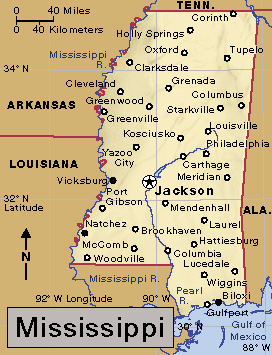
Mississippi was once a land of large cotton plantations, and its economy depended heavily on agriculture. Today, most workers are employed in the service industries, which include casino gaming, government, and trade. Factories also employ many people. Goods manufactured in the state include chemicals, furniture, meat products, motor vehicles, refined petroleum, and ships.
Cotton remains a valuable crop in Mississippi. Corn and soybeans are also important crops. Many Mississippi farmers raise cattle or chickens. Mississippi ranks among the leading producers of broilers (young, tender chickens) and cotton. The state also has significant deposits of petroleum and natural gas.

However, many of the jobs in Mississippi pay low wages. As a result, the average income in Mississippi is lower than in any other state.
Mississippi takes its name from the mighty river that forms most of its western border. Mississippi means the Big River, the Great Water, or the Father of Waters, in the language of the Indigenous (native) people who lived in the region in early times. Mississippi’s nickname, the Magnolia State, comes from the magnolia trees that grow in most parts of the state. Mississippi’s warm, moist climate allows garden flowers, such as azaleas and camellias, to bloom for months each year.
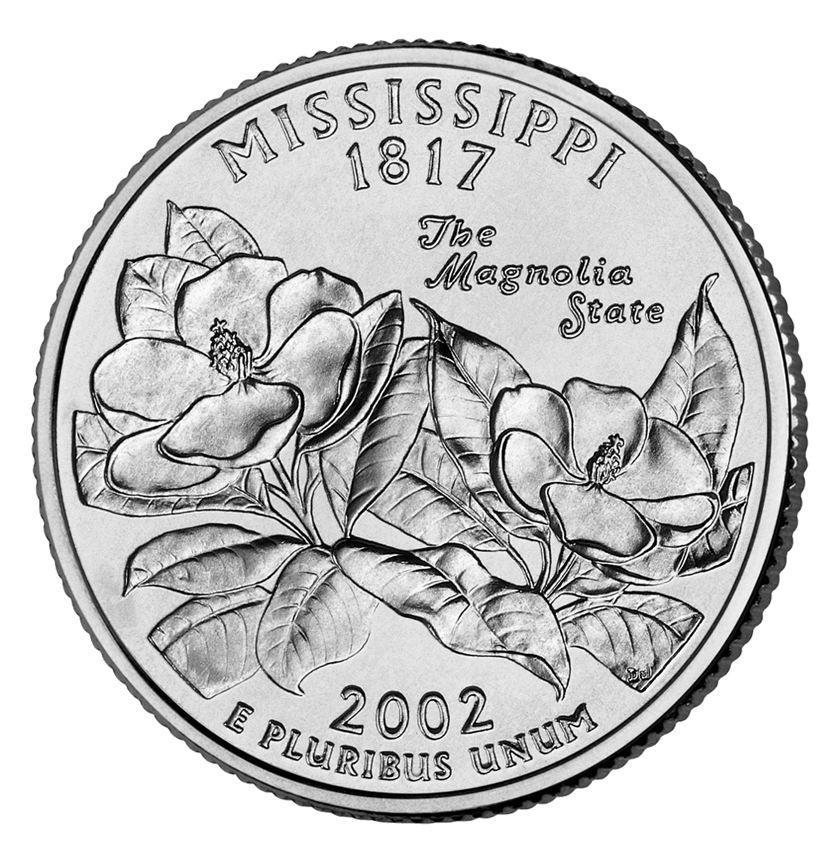
The Natchez Trace Parkway cuts through the state from Nashville, Tennessee, to Natchez. The beautiful parkway follows an old Native American and pioneer trail. Historic mansions are reminders of plantation life in Mississippi before the American Civil War (1861-1865). Vicksburg National Military Park marks the site of one of the many Civil War battles that were fought in Mississippi.
Several famous writers were born in Mississippi. They include playwright Tennessee Williams, former U.S. Poet Laureate Natasha Trethewey, and authors William Faulkner, Angie Thomas, Jesmyn Ward, Eudora Welty, and Richard Wright. Other well-known Mississippians include singers Muddy Waters and B. B. King, who were influential in popularizing blues music.
People
Population.
The 2020 United States census reported that Mississippi had 2,961,279 people. The population decreased slightly from the 2010 figure, which was 2,967,297. According to the 2020 census, Mississippi ranks 34th in population among the 50 states. 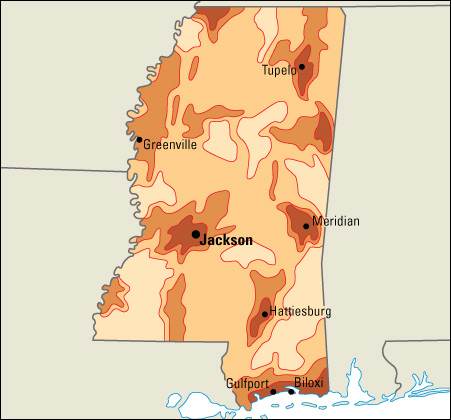
About half of Mississippi’s people live in urban areas. The state’s largest city is Jackson, the state capital and center of Mississippi’s business and financial activities. Jackson is also Mississippi’s largest metropolitan area.
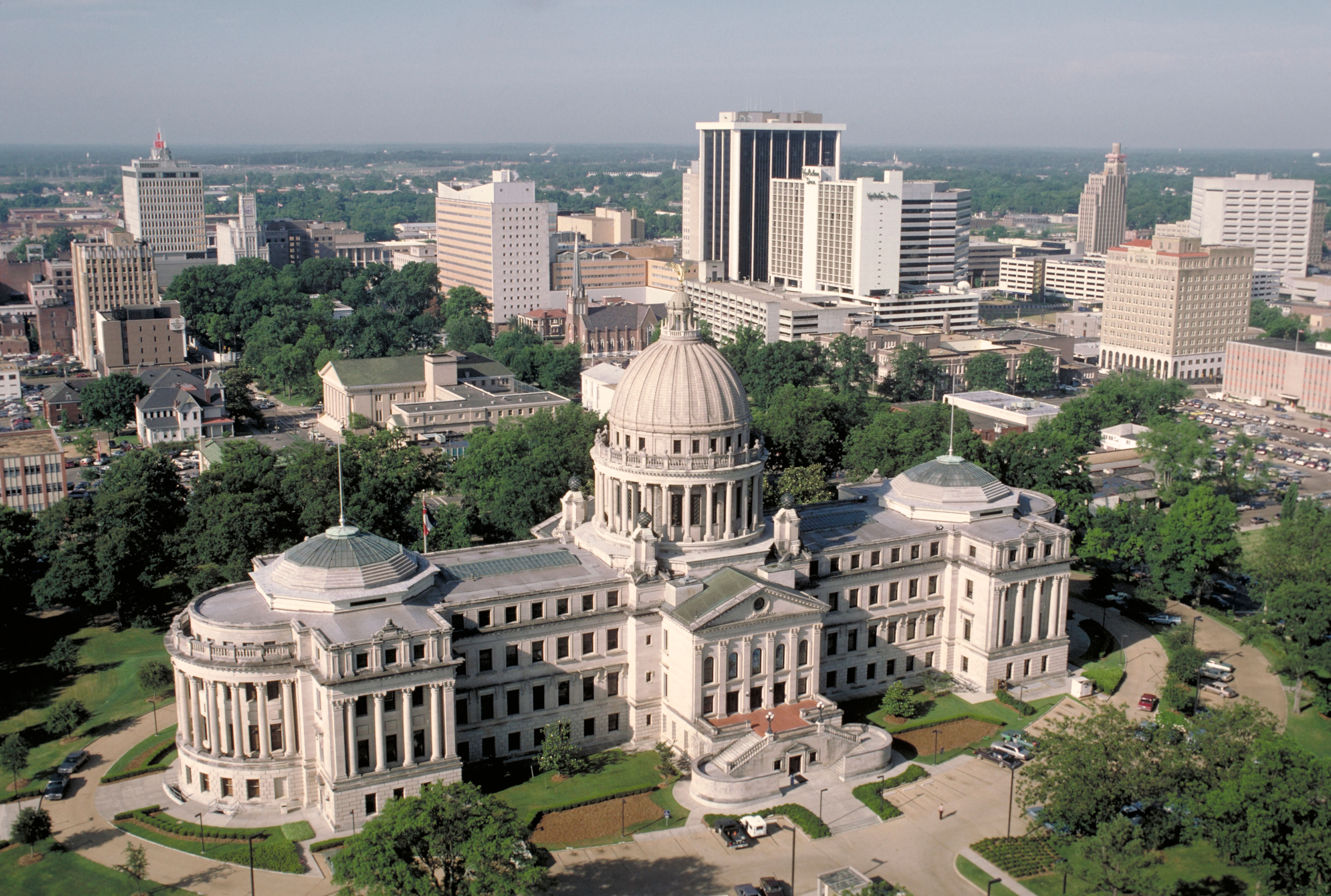
About half of Mississippi’s people live in metropolitan areas (see Metropolitan area). The Gulfport-Biloxi, Hattiesburg, and Jackson metropolitan areas lie entirely within the state. The Memphis (Tennessee) metropolitan area extends into Benton, DeSoto, Marshall, Tate, and Tunica counties in Mississippi.
Mississippi’s eight largest cities, in order of size, are Jackson, Gulfport, Southaven, Biloxi, Hattiesburg, Olive Branch, Tupelo, and Meridian. Several of the state’s large cities lie on the Mississippi River. They include Greenville, Natchez, and Vicksburg.
The 2020 U.S. census showed that 37 percent of the people in Mississippi are African Americans. This is a larger proportion of African Americans than in any other state. Hispanic Americans, the state’s next largest minority group, account for about 4 percent of the population. Mississippi’s other large population groups include people of English, German, and Irish descent.
Schools.
Mississippi’s first permanent schools were established in the early 1800’s. The Mississippi public school system was established by the Constitution of 1869. The state set up a board of education and provided that every child should receive free schooling for four months each year. At first, most Mississippians opposed public schools. The American Civil War had caused hard times, and the people had little money for school taxes. But by the end of the 1890’s, conditions had improved and the Mississippi public school system had won general approval.
In the early 1900’s, a large majority of Mississippi’s school-age children lived in rural areas. Many rural schools were very small and had limited resources. The state government tried to improve schools by consolidating small districts (see Consolidated school). The state also established agricultural high schools, which offered instruction in agricultural methods and home economics in addition to other high school subjects. During the 1920’s, Mississippi’s first junior colleges grew out of some of the agricultural high schools.
Like other Southern states, Mississippi had separate schools for Black and white students for many years. In 1954, the Supreme Court of the United States ruled that public school segregation on the basis of race is unconstitutional. The first racial integration in Mississippi public schools took place in 1964. Today, all the state’s public school districts are integrated. Children from 6 through 16 years of age must attend school.
A state superintendent of education supervises Mississippi’s public schools. The superintendent heads the state’s Department of Education, which administers state education laws. A nine-member State Board of Education selects the superintendent. The governor appoints five members of the board. The lieutenant governor and the speaker of the state House of Representatives each appoint two members of the board. For the number of students and teachers in Mississippi, see Education (table: U.S. students, teachers, and school expenditures).
Libraries.
The first public library in Mississippi was established in Port Gibson in 1818. Today, there are hundreds of public libraries in the state.
Several university libraries in Mississippi have outstanding collections. These include William Faulkner’s “Rowan Oak Papers” and the Blues Archive at the University of Mississippi. Mississippi State University is the home of the John C. Stennis Collection. Jackson State University has the holdings of the Margaret Walker Alexander National Research Center. The University of Southern Mississippi has the collections of the Center for Oral History and Cultural Heritage, the de Grummond Children’s Literature Collection, and the Cleanth Brooks Collection.
The Mississippi Department of Archives and History, established in 1902, is the second oldest department of archives and history in the United States. It has the most complete collection of historical information on Mississippi.
Museums.
The Old Capitol Museum, in Jackson, is housed in one of the state’s most historic buildings. The Old Capitol served as the seat of state government from 1839 to 1903. Other historical museums include the Museum of Mississippi History in Jackson; the Old Court House Museum in Vicksburg; and Beauvoir, the Biloxi estate of Confederate President Jefferson Davis.
Art museums in Mississippi include the Mississippi Museum of Art in Jackson, the University of Mississippi Museum in Oxford, the Lauren Rogers Museum of Art in Laurel, and the Ohr-O’Keefe Museum of Art in Biloxi. The Mississippi Museum of Natural Science, in Jackson, features exhibits relating to the state’s natural history. The Mississippi Civil Rights Museum, also in Jackson, contains exhibits that detail the struggles of African Americans for equal rights. The Delta Blues Museum in Clarksdale has displays on the history of blues music.
Visitor’s guide
The Gulf Coast of Mississippi is one of the nation’s most popular resort regions. This vacationland has won fame for its large, sunny beaches and fine hotels. Attractions in other parts of the state include historic monuments and pleasant wooded areas.
Thousands of visitors take tours of Mississippi’s many old mansions and plantations. There, visitors can learn what life was like in Mississippi before the American Civil War (1861-1865). Annual blues festivals and the museums and other sites that celebrate Mississippi’s musical heritage are also popular with visitors.
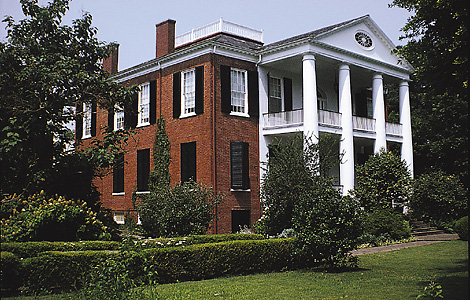

Excellent hunting and fishing in the state’s numerous wildlife management areas attract many people. Hunters may shoot such animals as wild doves, ducks, geese, quail, turkeys, deer, rabbits, raccoons, and squirrels. Thousands of Mississippi ponds and lakes have been stocked with fish. People can cast in fresh water for bass, bream, crappies, and other fishes. Or they may sit lazily on the banks of a Mississippi river or pond and wait for catfish to take their bait. Saltwater fishing enthusiasts fight big game fish in the waters off the Gulf Coast of Mississippi.
One of the highlights of Mississippi’s many annual events is the Shrimp Festival in Biloxi. This event takes place during the first week of June. The Shrimp Festival marks the opening of the shrimp-fishing season in Mississippi. Highlights of the celebration include the blessing of the shrimp fleet.
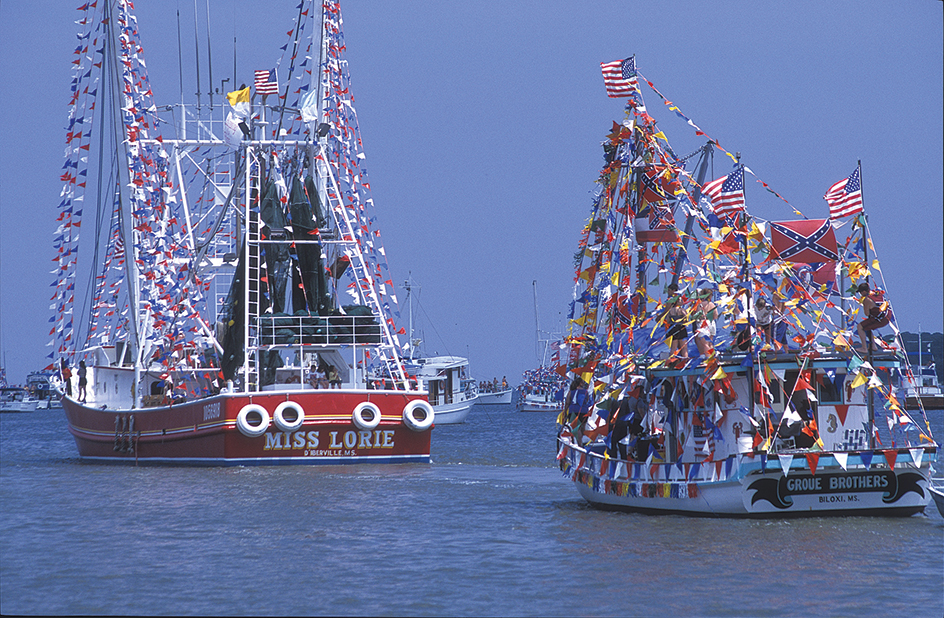
Land and climate
Land regions.
Mississippi has two main land regions: (1) the Mississippi Alluvial Plain, and (2) the East Gulf Coastal Plain.
The Mississippi Alluvial Plain
covers the entire western edge of the state. It consists of fertile lowlands and forms part of the 35,000-square-mile (90,600-square-kilometer) Alluvial Plain of the Mississippi River. The region is quite narrow south of Vicksburg. North of the city, the plain spreads out and covers the area between the Mississippi River and the Yazoo, Tallahatchie, and Coldwater rivers. Floodwaters of the rivers have enriched the soil of the region with deposits of silt. The Mississippi Alluvial Plain, with its fertile soil, is famous for large cotton and soybean crops. Most Mississippians call this region the Delta.
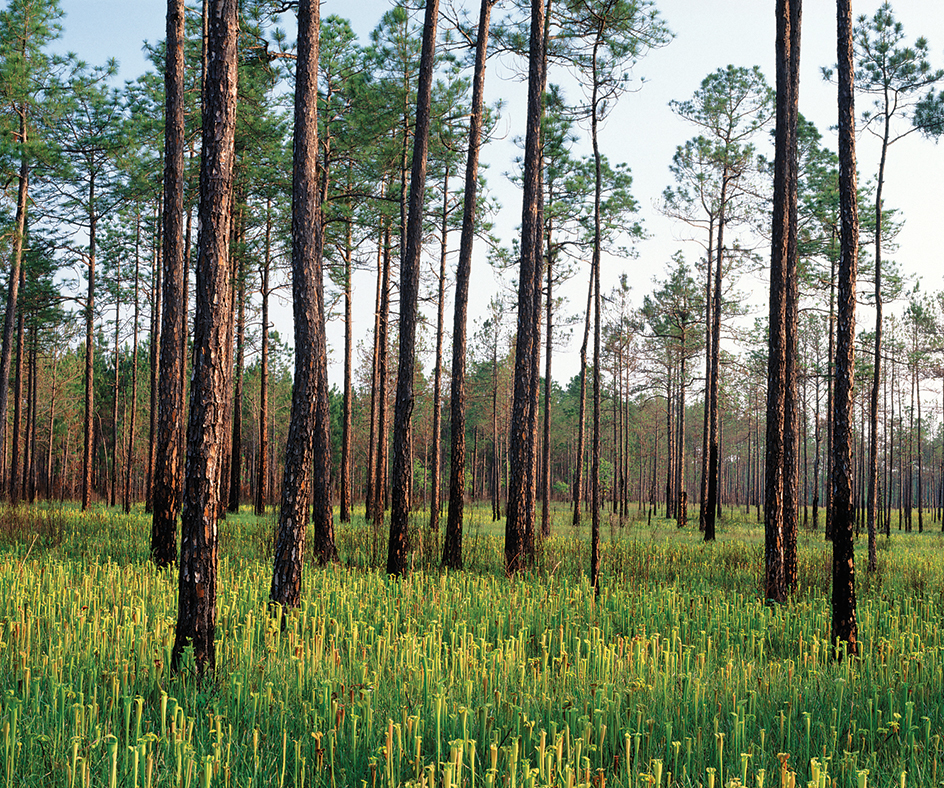

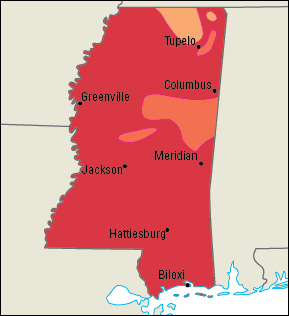
The East Gulf Coastal Plain
extends over all the state east of the Alluvial Plain. Most of the region is made up of low, rolling, forested hills. The coastal plain also has prairies and lowlands. Yellowish-brown loess (soil blown by winds) covers the region in the west. Most Mississippians call these deposits the Cane, Bluff, or Loess Hills. The Tennessee River Hills rise in northeastern Mississippi. They include the highest point in the state, 806-foot (246-meter) Woodall Mountain. The Pine Hills, often called the Piney Woods, rise in the southeastern part of the region. They are covered largely with longleaf and slash-pine forests.
The main prairie is called the Black Belt or Black Prairie because its soil is largely black in color. This long, narrow prairie lies in the northeast section of the state. The Black Belt stretches through 10 counties. Livestock graze there, and corn and hay grow well on the farmlands of the Black Belt. Small prairies also lie in central Mississippi, east of Jackson. Along the Mississippi Sound, which borders the Gulf Coast, lowlands stretch inland over the southern portion of the region.
Coastline.
Mississippi has a coastline of 44 miles (71 kilometers) along the Gulf of Mexico. With bays and coves, it has a total shoreline of 359 miles (578 kilometers). The largest bays include Biloxi, St. Louis, and Pascagoula. The nation’s longest sea wall protects about 25 miles (40 kilometers) of coastline between Biloxi and Point Henderson at Pass Christian. Other coastal towns include Bay St. Louis, Gulfport, and Ocean Springs. Deer Island is near the mouth of Biloxi Bay, and a chain of small islands lies off the coast. They include Cat, Horn, Ship, and Petit Bois islands. The Mississippi Sound separates them from the mainland.
Rivers and lakes.
Mississippi has many rivers and lakes. The nation’s most important river, the Mississippi, forms most of the state’s western border. Its floodwaters, in earlier times, often deposited silt on the land, and helped make the land fertile. In some years, heavy floods damaged crops and homes. Today, wide levees (dikes) help protect many areas against damaging floods (see Levee; Mississippi River).
The state has several main river basins. The rivers of the western and north-central basin drain into the Mississippi River. These rivers include the Big Black River and the Yazoo River with its tributaries, the Coldwater, Big Sunflower, and Tallahatchie rivers. Rivers of the eastern basin drain into the Gulf of Mexico. They include the Pearl, Pascagoula, and Tombigbee. 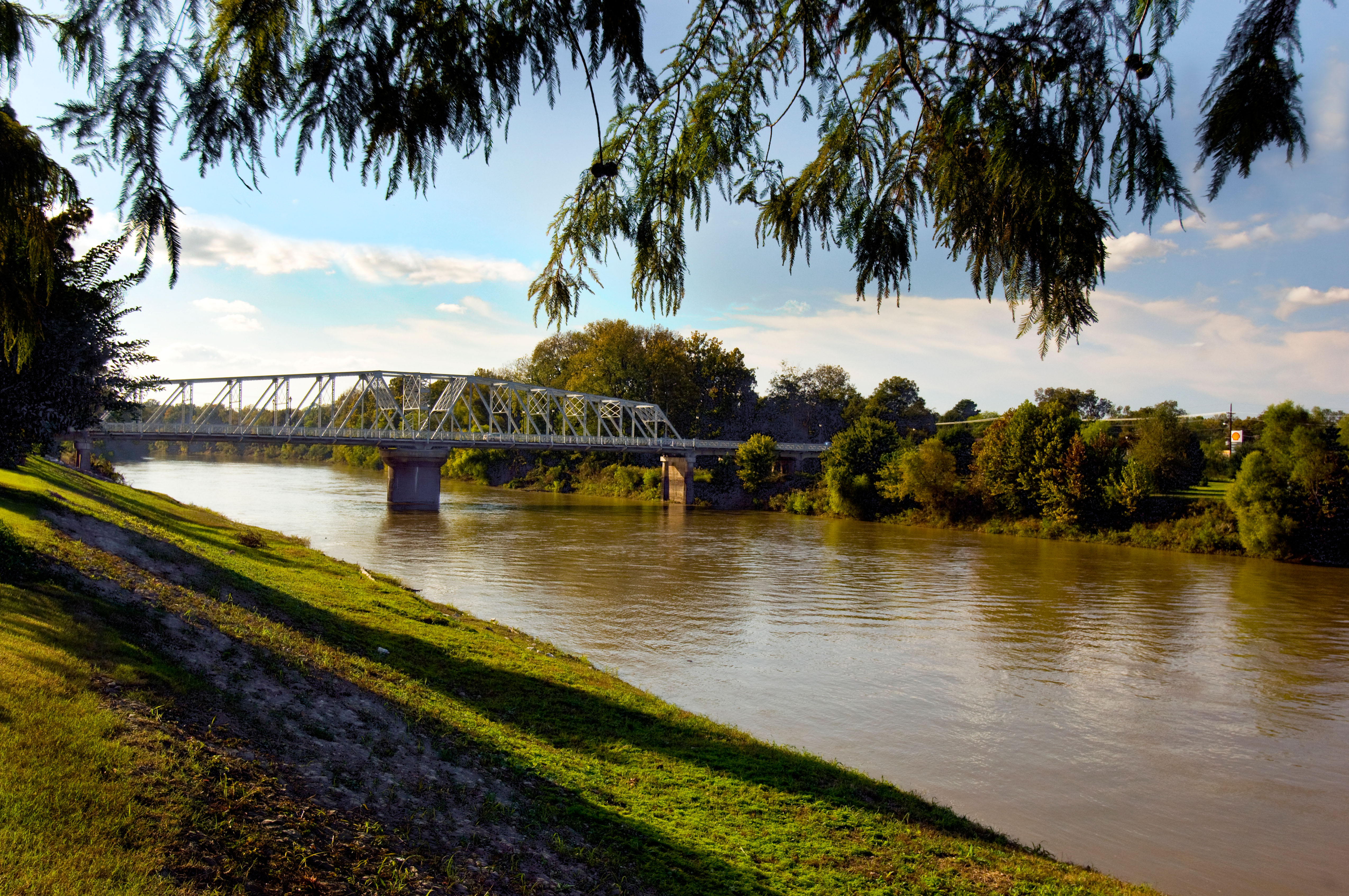
Many of Mississippi’s lakes are artificially created reservoirs, such as Pickwick Lake in the northeastern corner of the state. Other artificially created lakes include Arkabutla, Enid, Grenada, and Sardis, all in north-central Mississippi. These lakes lie behind flood-control dams. In the early 1960’s, the large Ross Barnett Reservoir was built on the Pearl River near Jackson.
The Mississippi River has formed many oxbow lakes, mostly north of Vicksburg. These lakes are crescent-shaped bodies of water that used to be curves of rivers before they became cut off from the main streams. Oxbow lakes found in Mississippi include Beulah, Lee, Moon, and Washington. Mississippi also has many slow-moving streams called bayous. Some of the bayous connect the lakes with the rivers in the Delta. Others link the inland waterways with the Gulf of Mexico (see Bayou).
Plant and animal life.
Forests cover more than half of Mississippi. Pine trees are important as a source of lumber. Loblolly, longleaf, and slash pines grow in the Piney Woods area. The shortleaf pine grows in the northern and central sections of the state. Other trees that grow in Mississippi include the ash, baldcypress, cottonwood, elm, hickory, oak, pecan, sweet gum, and tupelo.
Several species of magnolia trees grow in Mississippi. The southern magnolia, an evergreen tree with fragrant white flowers, grows throughout the state. The tree is the state tree, and its flower, the southern magnolia, is the state flower (see Magnolia). Many parts of the state also have azaleas, black-eyed Susans, camellias, crepe myrtle, dogwood, redbud, violets, Virginia creepers, and pink and white Cherokee roses.
Animal life in Mississippi includes beavers, deer, foxes, opossums, rabbits, and squirrels. Among the state’s game birds are wild doves, ducks, quails, and turkeys. The mockingbird is Mississippi’s state bird. Freshwater fish found in the state’s waters include bass, bream, catfish, and crappies. In the Gulf waters are crabs, oysters, shrimp, menhaden, mackerel, and speckled trout.
Climate.
Mississippi has a warm, moist climate with long summers and short winters. In July, Mississippi temperatures average about 81 °F (27 °C). Winds from the Gulf of Mexico and frequent thundershowers cool much of the state during the summers. However, temperatures of 90 °F (32 °C) or higher occur about 55 days a year on the Gulf Coast and more often in Mississippi’s interior. But even in the interior of the state, the temperature seldom rises above 100 °F (38 °C). The highest temperature recorded in Mississippi was 115 °F (46 °C) at Holly Springs on July 29, 1930. 
January temperatures average 45 °F (7 °C) in the state. The lowest temperature was —19 °F (—28 °C), recorded at Corinth on Jan. 30, 1966. The northern and central parts of Mississippi occasionally have ice and snow. The Gulf Coast ordinarily has a frost-free season of 250 to 300 days.
Mississippi’s precipitation ranges from about 53 inches (135 centimeters) a year in the northwestern part of the state to about 65 inches (165 centimeters) in the southeastern part. Hurricanes sometimes sweep northward from the Gulf of Mexico in late summer and fall.
Economy
Mississippi’s economy has long relied on traditional industries, such as manufacturing and agriculture. Manufacturing remains a leading economic activity in the state. But service industries, which include casino gaming, government, and trade, are of growing importance.
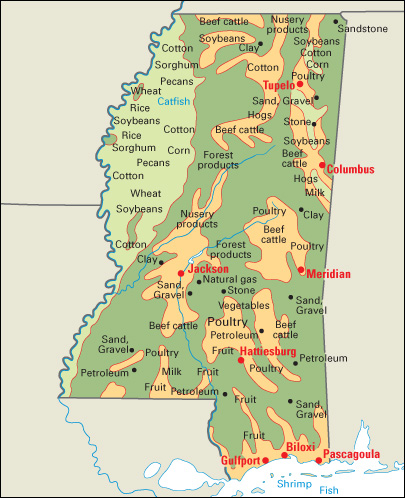
Natural resources
of Mississippi include rich soils, abundant water, valuable minerals, and large forests.
Soil and water
are the state’s most important natural resources. The Mississippi Alluvial Plain has some of the richest soil in the United States. Much of it is silt deposited by floodwaters of the Mississippi River. Another fertile area of clay loam soils is in the Black Belt. These soils are gray or black. Sandy loam covers most of the East Gulf Coastal Plain. Mississippi has great supplies of surface water and many wells. Together, they furnish abundant fresh water for home and industrial use.
Minerals.
Natural gas and petroleum are Mississippi’s most valuable mined resources. The chief natural gas and oil deposits are in the southern half of the state.
Mississippi has many kinds of clays that are used by industry. They include bentonite, used to lubricate oil well drills, and fuller’s earth, used in refining fats and oils. Other clays are ball clays, used in ceramics, and certain clays suitable for making brick and tile.
Large deposits of sand and gravel are found in the state. Tishomingo County has large deposits of sandstone. Other mined resources include limestone and lignite, a kind of coal.
Forests
cover about 65 percent of Mississippi’s land area. They provide the raw materials for a huge output of products that make Mississippi a leading forest industry state. The most important trees are the loblolly, longleaf, and slash pines of the Piney Woods area, and the shortleaf pine of northern and central Mississippi. Other trees include the ash, baldcypress, cottonwood, elm, hickory, oak, pecan, sweet gum, and tupelo. Mississippi conducts a widespread program of planting young trees to replace those that are cut down. Mississippi has more tree farms than any other state.
Service industries
provide the majority of both Mississippi’s employment and its gross domestic product—the total value of all goods and services produced in the state in a year.
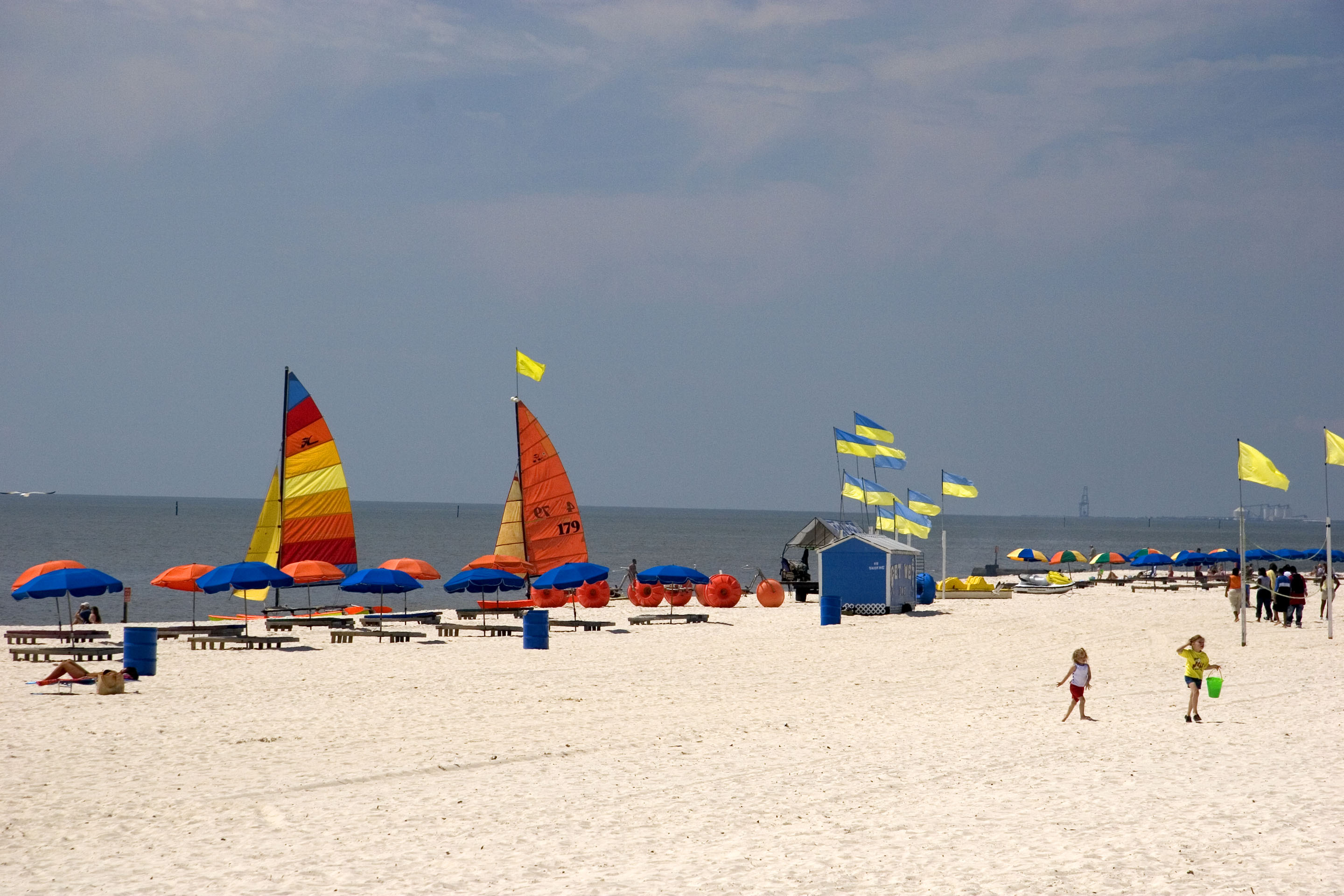
Jackson, the state capital, is the center of government activities. The city is also Mississippi’s leading financial center. Most of the state’s major banks, insurance firms, and real estate firms are based in the Jackson area. Many hotels, restaurants, and retail trade establishments operate in the Biloxi and Jackson areas and in the northwest corner of the state, just south of Memphis, Tennessee.
Major military establishments in the state include Keesler Air Force Base in Biloxi and the John C. Stennis Space Center in Hancock County. The Stennis Space Center is the largest rocket engine test site of the National Aeronautics and Space Administration (NASA).
Casino gaming has become a huge industry in Mississippi, which is a leading casino income state. Many casinos operate in Biloxi and in Tunica County. Mississippi’s location in the heart of the Southeast and along the Mississippi River makes it a major transportation state.
Manufacturing.
Transportation equipment is Mississippi’s leading manufactured product. Motor vehicles, motor vehicle parts, and ships are the leading transportation equipment products. A plant near Canton manufactures motor vehicles. Factories near Jackson produce electrical parts for motor vehicles. Shipyards in Pascagoula build commercial ships, including tankers, and military ships, including destroyers.
Chemicals and food products are also important manufactured products. Leading types of chemical products include agricultural chemicals, cleaning products, pharmaceuticals (medicinal drugs), and resins. Meat products rank as Mississippi’s leading processed foods. Forest, Laurel, and Morton have large poultry-processing plants. Other important food products include baked goods and seafood.
Other manufactured products include fabricated metal products, furniture, machinery, plastics and rubber products, and refined petroleum. Fabricated metal products include machine shop products, metal tanks, and metal doors and windows. Mississippi is a leading state in upholstered furniture production. Furniture is primarily made in the northeastern part of the state. Farm equipment, heating and cooling equipment, and engines and turbines are the leading types of machinery. Tires are made in Tupelo. Pascagoula has a large petroleum refinery.
Agriculture.
Farmland covers about one-third of Mississippi. Broilers (young, tender chickens) are the leading livestock product in Mississippi, and Mississippi ranks as a leading broiler state. The largest concentration of poultry farms lies within a triangular region formed by Hattiesburg, Jackson, and Meridian. Some farmers raise hens to produce eggs.
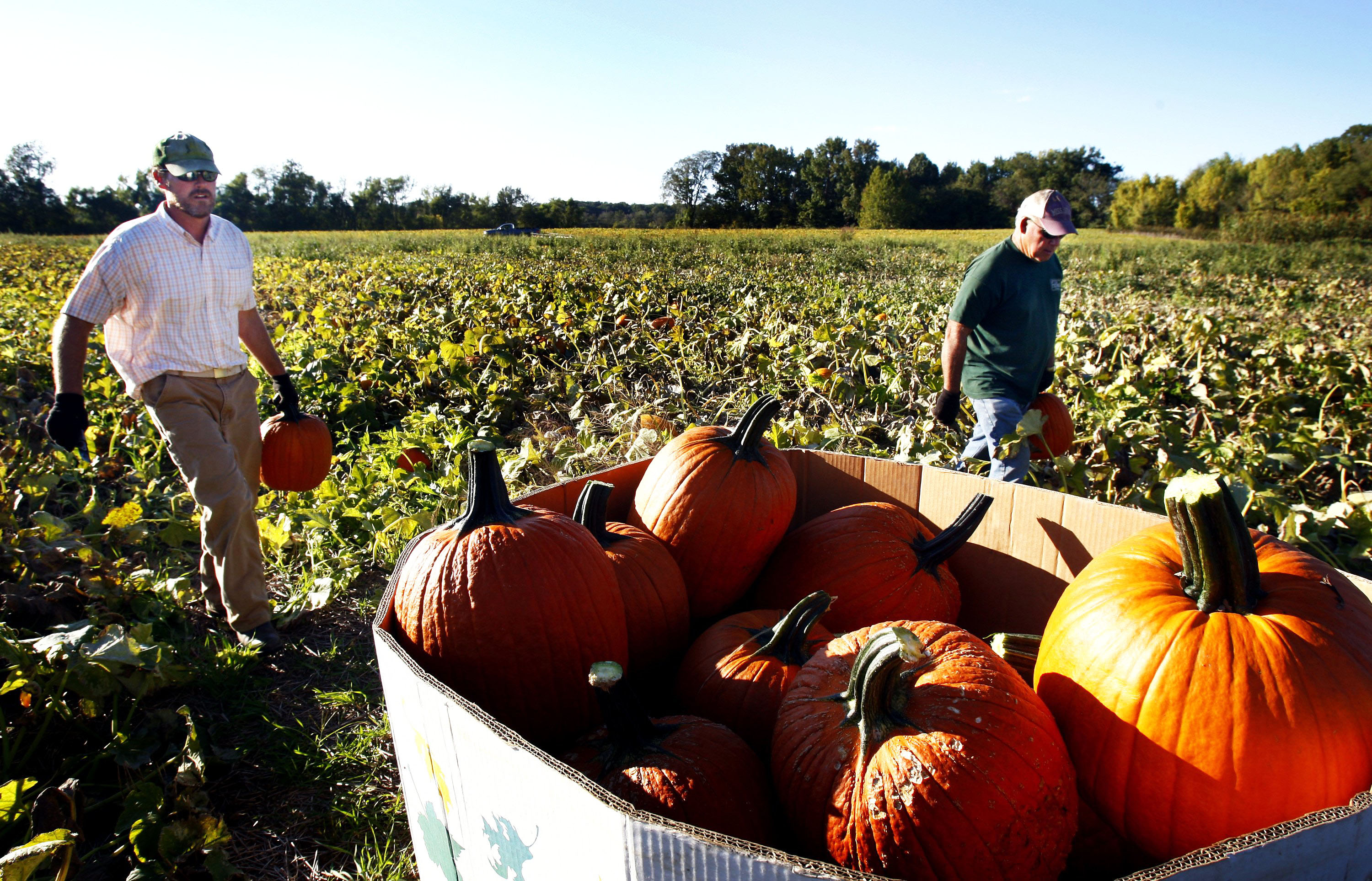
Beef and dairy cattle are also major sources of farm income in Mississippi. The state’s cattle farmers benefit from the mild climate, which allows for long growing seasons for feed crops. Cattle farms are common in all regions except the Alluvial Plain, the area usually called the Delta. Some farmers raise hogs or sheep.
Corn, cotton, rice, soybeans, and sweet potatoes are the state’s most valuable crops. These crops are all primarily grown in the northwestern and west-central parts of the state. Mississippi ranks as an important producer of cotton, rice, and sweet potatoes. 
Mining.
Petroleum and natural gas account for most of the value of the state’s mined products. Petroleum production is heaviest in the southern part of the state. Rankin County is a major producer of natural gas.
Mississippi’s other mined products include clays, crushed stone, lignite, and sand and gravel. Clays mined in the state are ball clay, bentonite, common clay, and fuller’s earth. Limestone quarries along the state’s eastern border are the main source of crushed stone. A lignite mine operates near Ackerman. Sand and gravel are mined throughout the state.
Fishing industry.
Mississippi is an important shrimp fishing state. Biloxi is Mississippi’s chief shrimp-packing port. Pascagoula ranks as another center of the state’s fishing industry. Other important catches include crab, finfishes, menhaden, oysters, and sea trout. Mississippi is the leading producer of farm-raised catfish. The Alluvial Plain, or Delta, is the center of the state’s thriving catfish farming and processing industry.
Electric power and utilities.
Natural gas-burning plants generate over half of the electric power produced in Mississippi. Nuclear plants and plants that burn coal supply most of the remaining electric power. Mississippi buys some of its electric power from the Tennessee Valley Authority.
Transportation.
Mississippi has one of the finest highway systems in the South. Jackson has the state’s largest commercial airport. Rail lines provide freight service on thousands of miles of track in the state.
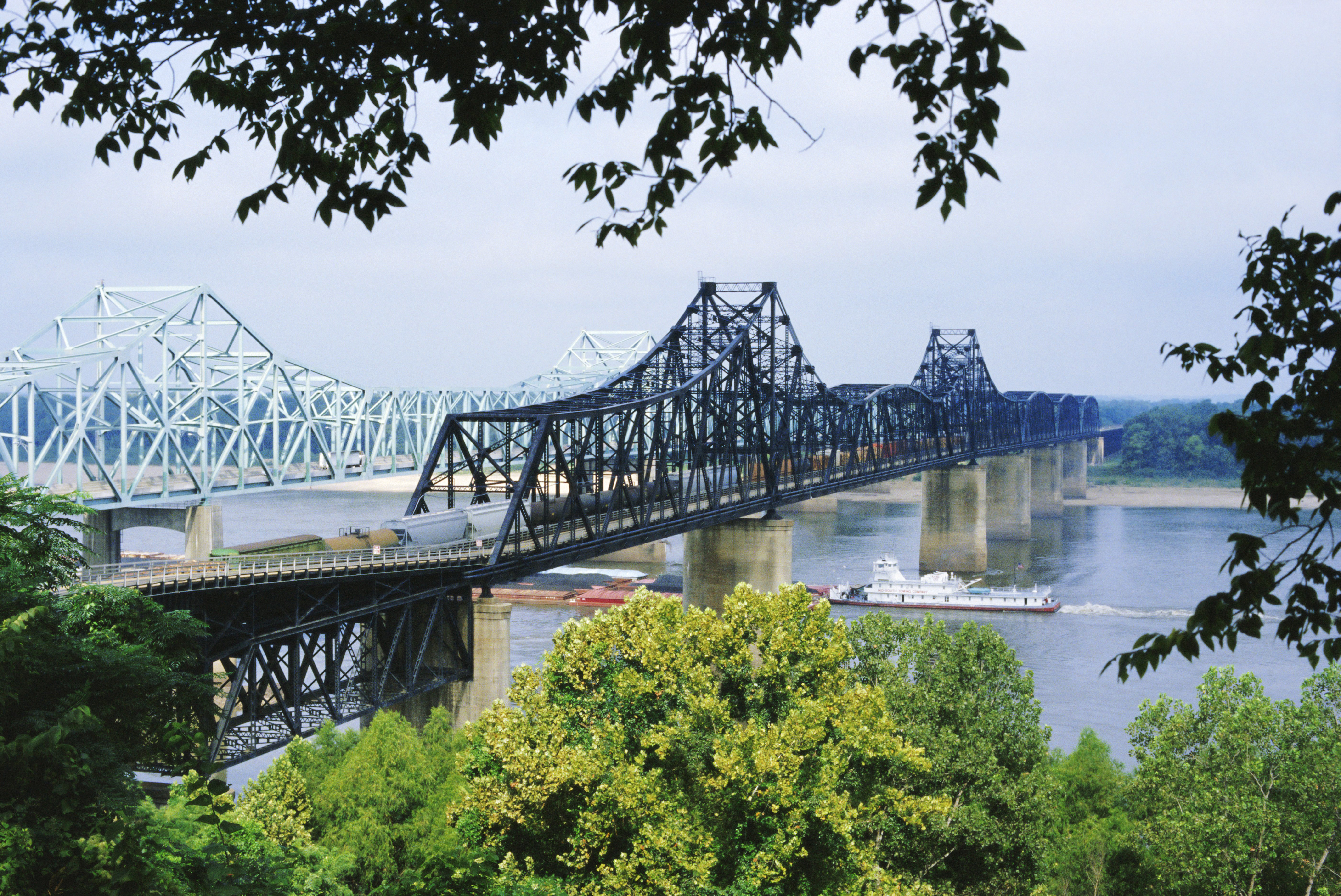
Mississippi has two major deepwater seaports, Gulfport and Pascagoula. The Mississippi River connects Mississippi with many inland states. The state’s leading river ports are Greenville, Natchez, Rosedale, and Vicksburg. The Tennessee-Tombigbee Waterway, which connects the Tennessee and Tombigbee rivers, provides cities in northeastern Mississippi with more direct access to ports on the Gulf of Mexico.
Communication.
Mississippi’s first newspaper, the Mississippi Gazette, was established in Natchez in 1799. The oldest newspaper still published in Mississippi, the Woodville Republican, was founded in 1823. Dailies with the largest circulations include The Clarion-Ledger of Jackson, the Northeast Mississippi Daily Journal of Tupelo, and The Sun Herald of Biloxi and Gulfport.
Government
Constitution.
Mississippi adopted its present Constitution in 1890. The state had three earlier constitutions, adopted in 1817, 1832, and 1869. The Constitution of 1869 was written so that Mississippi could qualify to reenter the Union after the American Civil War. An amendment (change) to the Constitution must be approved by two-thirds of the members of each house of the state Legislature. Then the amendment must be approved by a majority of the people voting on the amendment in a general election. The Constitution may also be amended directly by the people through their powers of initiative and referendum, a process by which voters propose a law and vote on it.
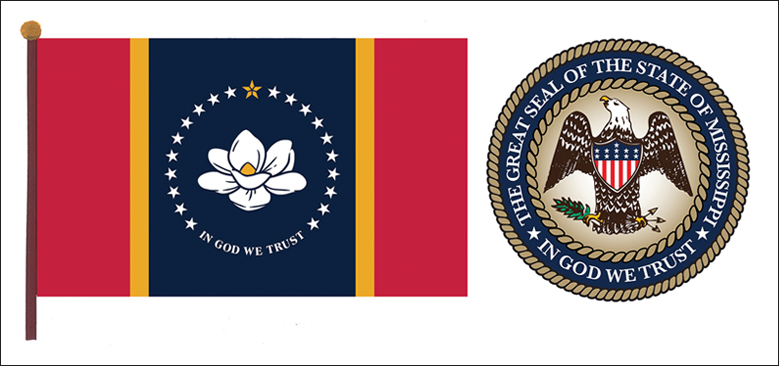
Executive.
The governor and lieutenant governor of Mississippi are both elected to four-year terms. The governor may not be elected more than twice. Other elected state executives include the secretary of state, treasurer, auditor, attorney general, commissioner of agriculture and commerce, public service and transportation commissioners, and commissioner of insurance. These officials are elected to four-year terms, and they may serve any number of terms.
Legislature
of Mississippi consists of a Senate of 52 members and a House of Representatives of 122 members. State legislators are elected to four-year terms. Regular legislative sessions begin on the Tuesday after the first Monday in January each year. Most of the sessions last 90 days. The Legislature may extend the sessions. In the first year after a gubernatorial election, the regular session may last up to 125 days. The governor may call special sessions. 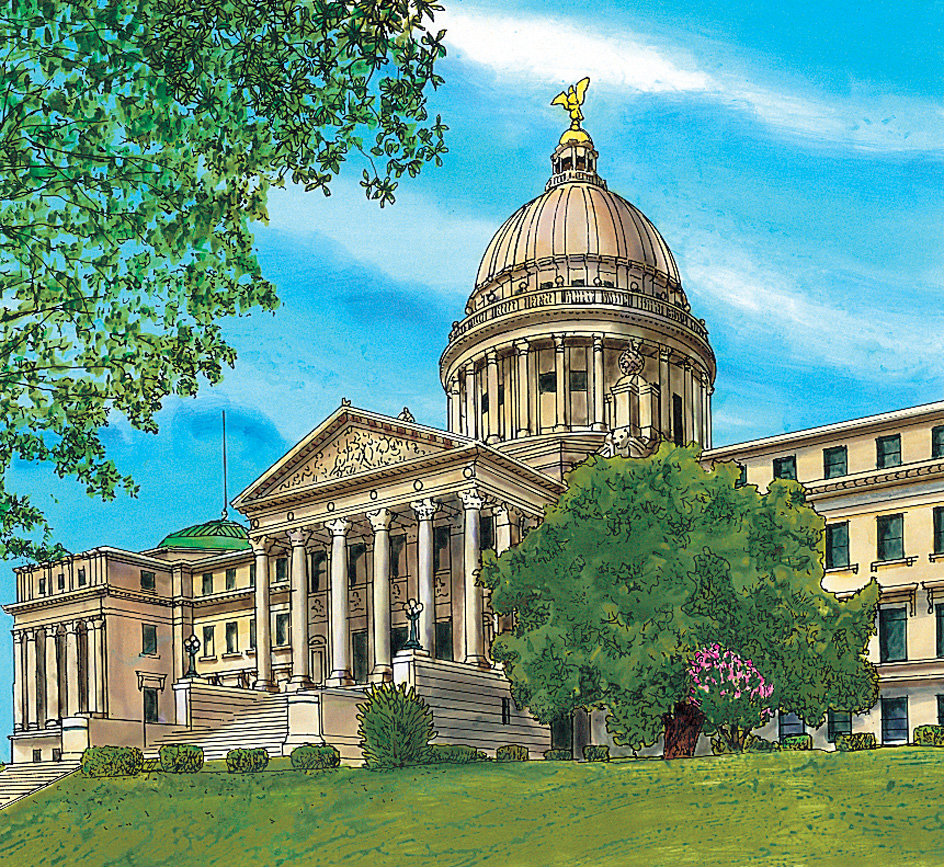
Courts
in Mississippi are headed by the Supreme Court. The people elect the nine Supreme Court justices to eight-year terms. Three are elected from each of three districts set up for electing Supreme Court justices. The justice who has served the longest acts as chief justice.
An intermediate Court of Appeals has 10 justices. These justices are also elected to eight-year terms. All other judges are elected to four-year terms. The chief trial courts are chancery courts, whose judges handle civil and equity cases, and circuit courts, whose judges handle civil and criminal cases. Mississippi’s other courts include county, intervention, justice, municipal, and youth courts.
Local government.
The county is the chief unit of local government in Mississippi. The state has 82 counties, each with five districts. The people of each district elect one of the five members of a county board of supervisors, which administers the county. Most cities in Mississippi have a mayor-council form of government. The Legislature controls the county and city governments.
Revenue.
Taxes provide about 40 percent of the state government’s general revenue (income). Most of the state’s remaining revenue comes from grants received from the federal government and from other United States government programs. The state receives about 50 percent of its tax revenue from a general sales tax. Other large sources of tax revenue in Mississippi include taxes on corporate income, individual income, motor fuels, and motor vehicle licenses. Additional state revenues come from fees paid for services operated by the state government.
Politics.
The Democratic Party controlled Mississippi politics throughout most of the state’s history. In the late 1800’s and the 1900’s, almost all Mississippi governors and most state and local officials were Democrats. Before the 1963 election, Republicans rarely nominated candidates for many state and local offices. As a result, nomination by the Democratic Party in primary elections almost always meant election to office. Since the late 1900’s, however, Republican candidates have had great success in Mississippi. Democratic strength today lies primarily with African American voters in the western part of the state.
In every presidential election from 1876 through 1944, Mississippi cast its electoral votes for the Democratic candidate. In most presidential elections since 1948, however, the state has voted for non-Democratic candidates.
History
Early days.
Between 25,000 and 30,000 Indigenous people lived in the Mississippi region when the first European explorers arrived. The Chickasaw lived in the north and east, and the Choctaw in the central area. Smaller groups included the Natchez in the southwest; the Chakchiuma, Tunica, and Yazoo tribes along the Yazoo River; and the Biloxi and Pascagoula tribes on the Gulf Coast. After the Europeans came to the region, many of the Native Americans died from diseases the Europeans introduced.
Exploration and early settlement.
In 1540, the Spanish explorer Hernando de Soto led the first European expedition into the Mississippi region. The group reached the Mississippi River in 1541 while searching for gold. The Spanish explorers found no treasure in the region. They left after a conflict with the Chickasaw and established no settlements there.
In 1682, the French explorer René-Robert Cavelier, Sieur de La Salle, traveled down the Mississippi River from the Great Lakes to the Gulf of Mexico. La Salle claimed for France the entire Mississippi Valley, which included present-day Mississippi. He named the region Louisiana for France’s king, Louis XIV.
In 1699, Pierre Le Moyne, Sieur d’Iberville, established the first European settlement in Mississippi at Old Biloxi (now Ocean Springs). In 1716, a second settlement was established by Jean Baptiste Le Moyne, Sieur de Bienville, at Fort Rosalie (now Natchez). Three years later, in 1719, the first enslaved people were brought to the region from West Africa. They worked in the rice and tobacco fields of the French colonists.
During the late 1600’s and early 1700’s, Native Americans and Europeans traded with each other. But competition for trade goods and the Europeans’ desire for land led to many conflicts. Native American groups and European groups fought among themselves and against each other.
Conflicts at Fort Rosalie between the French and the Natchez in the late 1720’s and early 1730’s ended with the French nearly wiping out the tribe. In 1736, in the Battle of Ackia, near present-day Tupelo, British troops helped the Chickasaw defeat French troops and their Choctaw allies. That defeat stopped the French from gaining control of the Mississippi Valley.
During the French and Indian War (1754-1763), the British and the Chickasaw kept the French forces in the lower Mississippi Valley from joining the French forces in the Ohio Valley. The Treaty of Paris, signed after the war, gave the British all the land east of the Mississippi River. Thus, the Mississippi region came under British rule. The northern section became part of the Georgia colony. The southern portion became part of the British province called West Florida.
Territorial days.
During the Revolutionary War in America (1775-1783), most of the settlers of West Florida remained loyal to the United Kingdom. But the Native Americans, trappers, and scouts of the rest of the Mississippi region supported the American Colonies. In 1781, Spain took control of West Florida. Two years later, the United Kingdom granted West Florida to Spain. After the Americans won their independence from Britain, the Mississippi region north of about the 32nd parallel was made part of the United States. The area between the 32nd and 31st parallels, which included the Natchez district, was claimed by both the United States and Spain. In 1795, the Spanish government accepted the 31st parallel as the border of the United States in the Pinckney Treaty (see Pinckney Treaty).
The U.S. Congress organized the Mississippi Territory in 1798, with Natchez as the capital. Winthrop Sargent became the first governor of the new territory. It was bounded on the south by the 31st parallel, on the west by the Mississippi River, on the north by a line east from the mouth of the Yazoo River, and on the east by the Chattahoochee River.
In 1803, the Louisiana Purchase made the Mississippi River part of the United States. Development of the territory was aided because the river allowed Mississippi trading ships to sail to the Gulf of Mexico.
In 1804, Congress extended the Mississippi Territory north to the border of Tennessee. More land was added in 1812. That year, the part of the West Florida Republic lying east of the Pearl River was incorporated into the Mississippi Territory. The republic had been formed in 1810 after American settlers took control of the region from Spain. With the incorporation of this land, the Mississippi Territory extended over all of present-day Alabama and Mississippi.
During the War of 1812, the Choctaw under Chief Pushmataha remained friendly to the Americans. The Choctaw joined the Mississippi militia in helping General Andrew Jackson put down uprisings of the British-supported Creek and in defeating a British army in the Battle of New Orleans.
Statehood.
In 1817, Congress divided the Mississippi Territory into the state of Mississippi and the Alabama Territory. On Dec. 10, 1817, Mississippi was admitted to the Union as the 20th state. The first Mississippi state governor, David Holmes, had been territorial governor since 1809. Columbia, Natchez, and Washington served as the state capital at various times until Jackson became the capital in 1822. 
In territorial days, Native American tribes had controlled almost two-thirds of Mississippi. The tribes gradually gave up their lands to the U.S. government. By 1832, most of the Native Americans had moved to the Indian Territory (now Oklahoma). The lands they left were opened for settlement.

Many settlers came from the East to farm the fertile soil of Mississippi. Much of the soil was excellent for growing cotton. Cotton production had increased throughout the South as a result of Eli Whitney’s cotton gin, which was invented in 1793.
After 1806, an improved type of cottonseed helped increase cotton production. The improved variety was developed from some seeds brought to Mississippi from Mexico. It was called Petit Gulf, the name of the area in Claiborne County where it was developed. The cotton producers used slave labor to operate large, profitable cotton plantations. By the mid-1800’s, enslaved people made up the largest group of the state’s population. Mississippi had many of the country’s largest plantations.
In the 1850’s, Mississippi farmers built many levees in the Delta region to control the floodwaters of the Mississippi and Yazoo rivers. In 1858, the Legislature set up a board of levee commissioners. A large amount of swampland was drained and made suitable for farming.
The American Civil War.
Most Mississippians did not favor secession (withdrawal) from the Union when South Carolina threatened to secede in 1832. But their feelings changed during the next 29 years. The reasons for the change included violations of the Fugitive Slave Law, the struggle over slavery in Kansas, the founding of the Republican Party, and the economic differences between the North and the South. Mississippi became a strong defender of states’ rights and of slavery. See Civil War, American (Causes and background of the war).
In January 1861, a convention met in the Old Capitol in Jackson and adopted the Ordinance of Secession. Mississippi became the second state, after South Carolina, to secede from the Union. About five weeks later, Jefferson Davis of Mississippi became president of the Confederate States of America. He had been a soldier, planter, and a U.S. senator. Davis also had served as secretary of war under President Franklin Pierce.
During the American Civil War, about 80,000 Mississippi troops served in the Confederate Army. Union and Confederate forces clashed in many places in the state and on its borders. Important battles were fought at Corinth, Harrisburg (now Tupelo), Holly Springs, Iuka, Jackson, Meridian, and Port Gibson. In June 1864, at Brice’s Cross Roads, Confederate General Nathan Bedford Forrest defeated a larger Union cavalry force.
The Battle of Vicksburg ranks as the most important military action in Mississippi. The Confederate stronghold in Vicksburg fell to General Ulysses S. Grant’s Union forces on July 4, 1863, after a 47-day siege. The victory gave the Union control of the Mississippi River.
After the war.
In 1867, during the Reconstruction period, the United States government placed Mississippi under military rule. Mississippi was readmitted to the Union in 1870, after adopting a new state constitution and ratifying Amendments 14 and 15 of the United States Constitution. It took many years for the state to recover from its war losses.
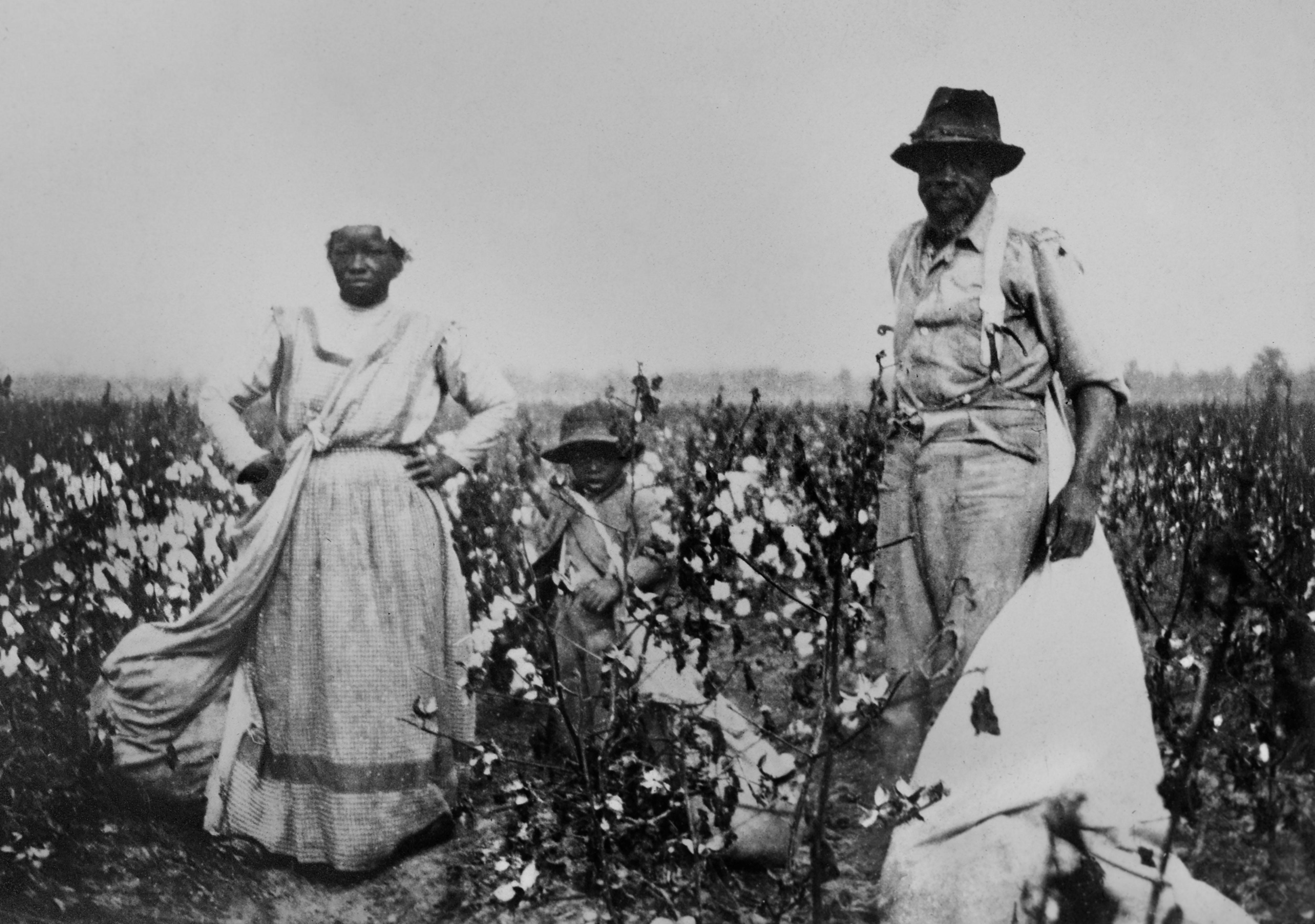
After Reconstruction ended in 1877, white people in Mississippi, as in the other Southern states, refused to share political power with Black people. Black citizens throughout the South gradually lost most of the rights they had gained after the war. Most lived in poverty. The voting requirements outlined in the Mississippi Constitution of 1890 made it impossible for Black people to vote. In the 1890’s, the legislatures in Mississippi and other Southern states began passing racial segregation laws that required separate places for Black people on trains and streetcars and in public facilities. Also during the 1890’s, hundreds of Black Americans in the South were lynched by mobs.
The early 1900’s.
Race relations in the state remained unchanged in the beginning of the 1900’s. Many African Americans began leaving to find jobs in Northern cities. But improvements occurred in industry and education.
The construction of railroads provided access to the pine forests of southeast Mississippi, resulting in a boom in the lumber industry. The industry reached a high peak just before World War I began in 1914. New drainage projects opened large swampy areas to agriculture. County agricultural high schools were established in 1908. The state established an illiteracy commission in 1916 to start a special educational program for adults who could not read or write. In 1912, the Mississippi Legislature passed laws regulating child labor.
Legislative measures during the 1920’s included the establishment of a state commission of education in 1924, of a state library commission in 1926, and of a highway building program in 1929. The first milk condensery in the South opened at Starkville in 1926.
Mississippi suffered greatly in the Mississippi River flood of 1927. About 100,000 people fled flooded homes in the Delta. The damage to crops and property in Mississippi totaled over $204 million. The next year, Congress made the U.S. Army Corps of Engineers responsible for controlling floods on the Mississippi River.
During the Great Depression of the 1930’s, Mississippi launched an important program of economic development. The program, called Balance Agriculture With Industry (BAWI), was helped by special laws passed by the Legislature in 1936. These laws freed new industries from paying certain taxes. The laws also allowed cities and counties to issue bonds and use the bond money to build factories for new industries. The BAWI program is administered by the state’s Department of Economic Development. In developing the BAWI program, Mississippi became one of the first states to use national advertising to promote new industries. The discovery of petroleum at Tinsley in 1939 and at Vaughan in 1940 aided the state’s economy.
The mid-1900’s.
During World War II (1939-1945), many war plants operated in Mississippi. The Ingalls shipyards in Pascagoula became an important shipbuilding center. After the war, the state’s industrial development continued. In 1954, the Legislature passed a right-to-work law. This law provided that no worker has to join a union if he or she does not want to do so. The law became part of the state’s Constitution in 1960.
During the 1960’s, Mississippi worked to attract new industries. The increasing mechanization of agriculture had created a surplus of farm labor, and Mississippi leaders wanted new industries that could employ former farmworkers. The Legislature passed laws in 1960 broadening the tax-free position of industry. In 1963, a huge oil refinery was built in Pascagoula. By 1966, more Mississippians worked in manufacturing than in agriculture. But Mississippi still had relatively little industry compared to many other states, and most of its workers earned low incomes.
In 1967, Litton Industries acquired the Ingalls shipyards and began an expansion program in Pascagoula. In other coastal areas, the tourist industry boomed.
As in many other states, racial problems became a focus of attention in Mississippi in the mid-1900’s. The state’s Constitution provided for segregated schools. But in 1954, the Supreme Court of the United States ruled that compulsory segregation of public schools was unconstitutional. Efforts by civil rights groups to bring about integration were sometimes met with violence.
In 1962, James Meredith became the first African American student to enroll at the University of Mississippi. The state government had opposed the enrollment. Large crowds gathered at the school, and federal troops were sent to ensure Meredith’s safety. Two people were killed in riots that broke out. In 1963, Medgar Evers, Mississippi field secretary of the National Association for the Advancement of Colored People (NAACP), was shot and killed. In 1964, during what was called “Freedom Summer,” hundreds of college students traveled to Mississippi for a project organized primarily by the Student Nonviolent Coordinating Committee, a civil rights organization. They worked to help African Americans register to vote. Three of the volunteers were murdered near Philadelphia, Mississippi. 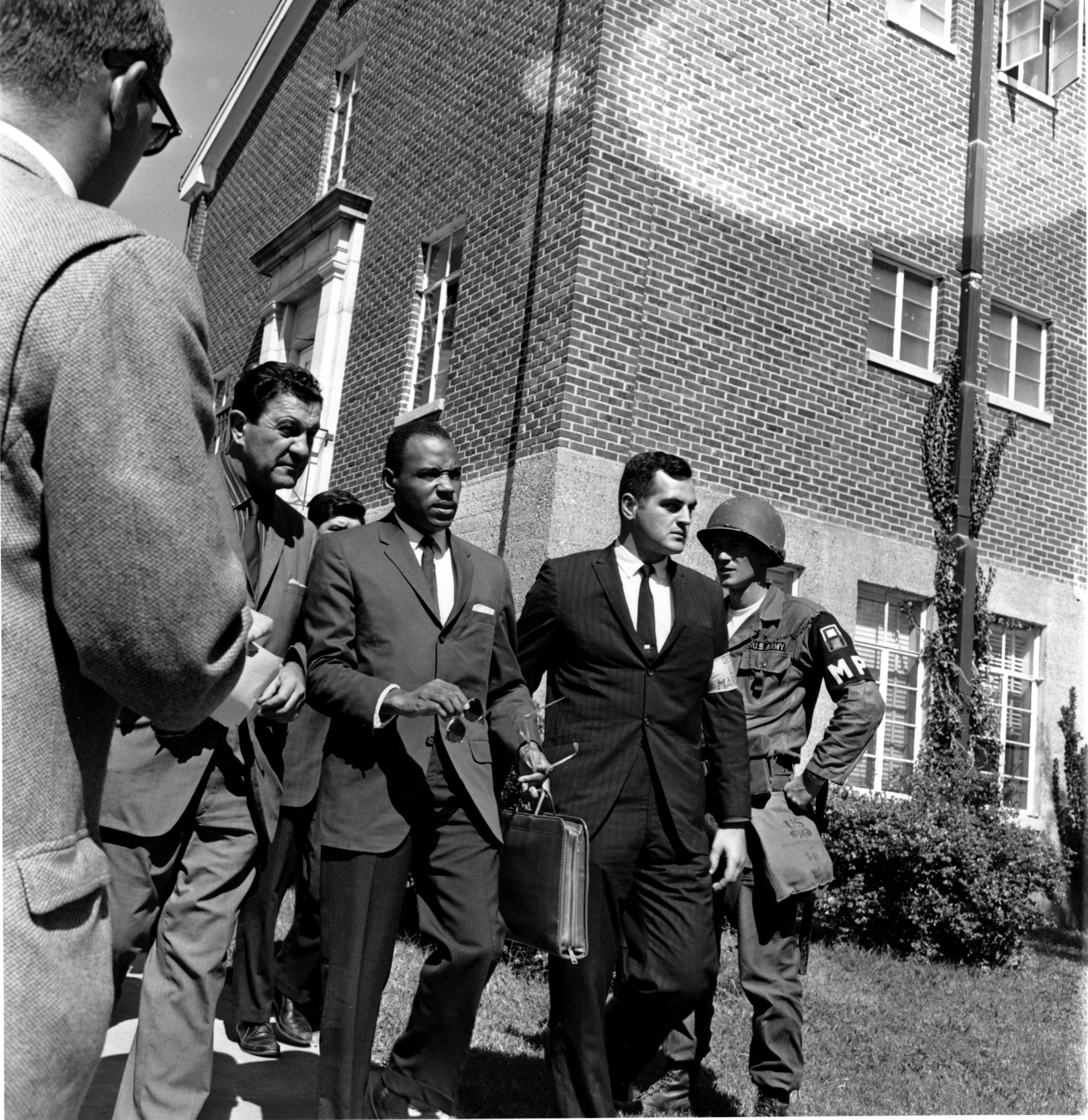
In the fall of 1964, the first public schools in Mississippi began to desegregate. In 1969, the U.S. Supreme Court ordered an immediate end to all segregated public schools. As a result, a federal court in New Orleans ordered 33 Mississippi school districts to desegregate by December 1969. Many white people opened segregated private schools and enrolled their children.
In 1967, Robert G. Clark won election to the Mississippi House of Representatives. He was the first African American member of the House since the Reconstruction period. In 1969, Charles Evers, brother of Medgar, was elected mayor of Fayette. He became the state’s first African American mayor since Reconstruction.
The late 1900’s.
The incomes of Mississippi families rose in the late 1900’s. However, these incomes remained low by national standards. New industries moved to the state during this period. The number of Mississippi workers employed in manufacturing grew. But thousands of farmworkers in the Delta region were jobless because of increased use of machinery on farms.
During this period, the Mississippi Choctaw people went from being one of Mississippi’s poorest groups to ranking among the state’s top employers. In 1969, the Choctaw opened a construction company to build homes for tribal members and teach members construction skills. By the end of the 1900’s, the Choctaw Reservation in east-central Mississippi had developed a number of business, tourism, and educational facilities. The employees included Mississippians of both Choctaw and non-Choctaw heritage.
In 1991, Kirk Fordice became the first Republican to be elected governor of Mississippi since 1874. He held office from 1992 to 2000.
The early 2000’s.
In 2001, Governor Ronnie Musgrove appointed a commission to propose a new design for the state’s flag. The flag, adopted in 1894, had borne in one corner a replica of the Confederate battle emblem used during the Civil War. Many people saw the emblem as a symbol of slavery and oppression. Later in the year, two-thirds of Mississippi voters rejected the new design and chose to keep the old flag.
In 2002, a settlement was reached in a long-running civil rights case. In 1975, Jake Ayers, Sr., had sued the state on behalf of his son, a student at Jackson State University. He claimed that the state’s traditionally Black universities received less funding than those attended primarily by white students. The state agreed to grant $500 million to Alcorn State, Jackson State, and Mississippi Valley State universities for new programs and facilities.
In August 2005, Hurricane Katrina struck the Gulf Coast, hitting Hancock, Harrison, and Jackson counties especially hard. High winds, huge waves, and flooding damaged or destroyed many buildings, roads, and bridges. More than 200 people died, and hundreds of thousands of people were left homeless. Parts of Biloxi, Gulfport, and several other coastal towns were devastated by a storm surge, a rapid rise in water levels produced when winds drive ocean waters ashore. 
In April 2010, an explosion on an offshore oil rig left 11 people dead and caused about 134 million gallons (507 million liters) of oil to pour from an underwater well into the Gulf of Mexico. Within weeks of the explosion, oil from the spill began appearing along the Mississippi coast. The spill had devastating effects on the state’s fishing and tourism industries. Officials called the spill one of the worst environmental disasters in U.S. history. Crews capped the well in July and permanently sealed it in September.
Mississippi’s flag, which featured the Confederate battle emblem, remained a source of controversy through the early decades of the 2000’s. A number of organizations and corporations declined to hold events in the state or open facilities there. In June 2020, the Legislature passed, and Governor Tate Reeves signed, a bill to remove and replace the state flag. The moves came at a time when protests of racial injustice and the legacy of slavery and white supremacy had captured the nation’s attention. The measure called for a commission to adopt a new design that omitted Confederate symbols and included the words “In God We Trust.” The commission approved a flag design that prominently featured a magnolia blossom, the state flower. Mississippians voted to accept the new design in a November referendum.
